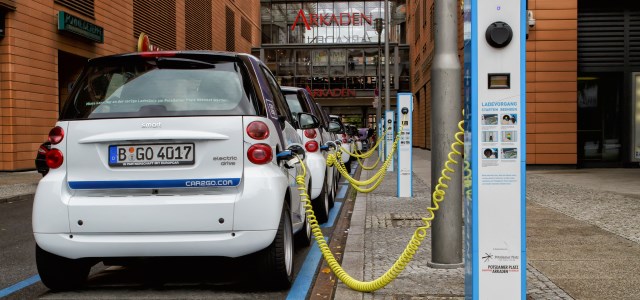Transportation in Germany accounts for around 20 percent of total carbon dioxide emissions. With 95% of fuel used in the transportation sector derived from fossil fuels, there is much room for improvement. According to Giovanni Dubon, the solution to this is electrifying the transportation sector.

Germany needs more integrated policies for the electrification of its transportation system. (Photo by avda-foto, CC BY-SA 2.0)
Germany’s transportation sector, compared to the United States, is already more sustainable. Germans drive fewer kilometres, emit less CO2 per capita, use more public transit per capita, and suffer less traffic fatalities than Americans. Sustainable public transit proves to be indispensable in mobility and results from integrated transportation and land-use policies. The next step is to replace internal combustion engines with battery electric vehicles and develop the infrastructure needed to support these vehicles. Germany has developed the “National Electromobility Development Plan,” which centers on an ambitious goal to have 1 million BEV on the road by 2020. By the end of 2014, only 20,000 electric vehicles were actually registered. With such a huge disparity in numbers, can Germany reach its goal?
The optimistic answer is yes, but not by 2020 at current rates. Sale rates between 2012-2013 rose by 56 percent, but that translates roughly to only 3,000 vehicles. By comparison, neighboring Netherlands grew by 281 percent and Norway by 129 percent. These countries have high subsidies and smart policies in place meant to achieve large growth. Germany, however, relies on only a tax break for owners, which limits the growth and only appeals to a certain type of buyer. A recent study conducted by the Institute of Transport Research found that these “early adopters” were primarily environmentally conscious middle-aged men with higher than average income and education. Encouraging electric vehicle accessibility to a more diverse group of people should be the German government’s primary objective. It has worked in countries with a higher number of electric vehicles on the road.
Take, for example, California. At the federal level, a tax credit exists just as in Germany. Just recently, a public private partnership between the Edison Electric Institute and the U.S. Department of Energy was announced to speed up the adoption of electric vehicles and infrastructure that will identify opportunities between the government and the utility industry. At the state level, incentives for prospective owners include rebates at the moment of sale, preferred use of high occupancy vehicle lanes on highways without the need to meet occupancy restrictions, and a law requiring homeowners associations to allow condominium owners to install the necessary battery charging equipment. At the local level, various cities take different approaches to incentivize electric vehicles. In Los Angeles, for example, the local utilities have stepped in offering lower rates during off-peak hours for households with such vehicles. In other cities in California, free parking and further rebates are offered for owners of electric vehicles.
At a time when utilities in Germany are searching for their role in the Energiewende, looking at new roles of utility companies in California and the new utility/federal government partnership could help generate a new business model for Germany companies. Through integrated policies at the federal, state, and local level to financially incentivize residents, Germany will be on its way to reach the 1 million goal. Integration is one of Germany’s strengths and by wielding it, a cleaner transportation sector can be achieved.
Giovanni Dubon is a graduate student at New York University in Energy and Environmental Policy specializing in sustainable cities, transportation, and the geopolitics of energy. He has worked on climate change at the California State Assembly and U.S. House of Representatives, and in political affairs at the United Nations.
My impression is that considerable political turmoil would be required for even a chance of achieving near term changes with sufficient advantages for electric cars (and accompanying implicit disadvantages for ICE cars) to meet the 2020 goal. My hope is that by 2020 advances in battery range and cost (and the gradual disappearance of an older generation of ICE enthusiasts?) will tip the balance.